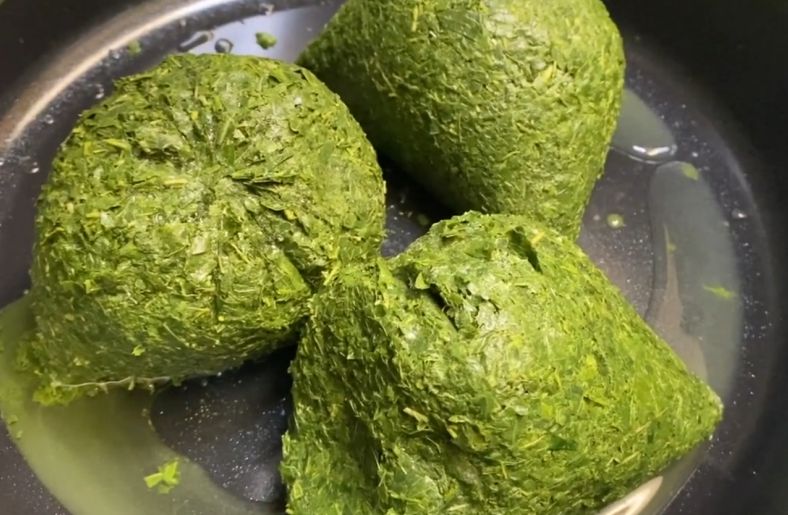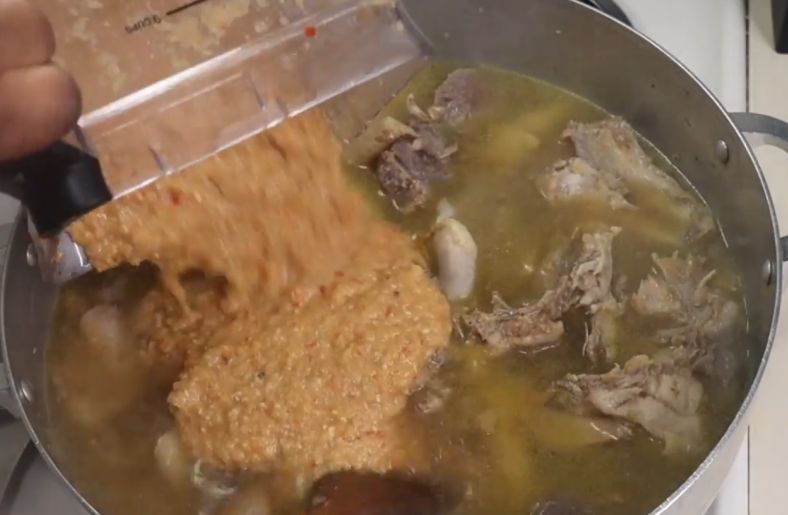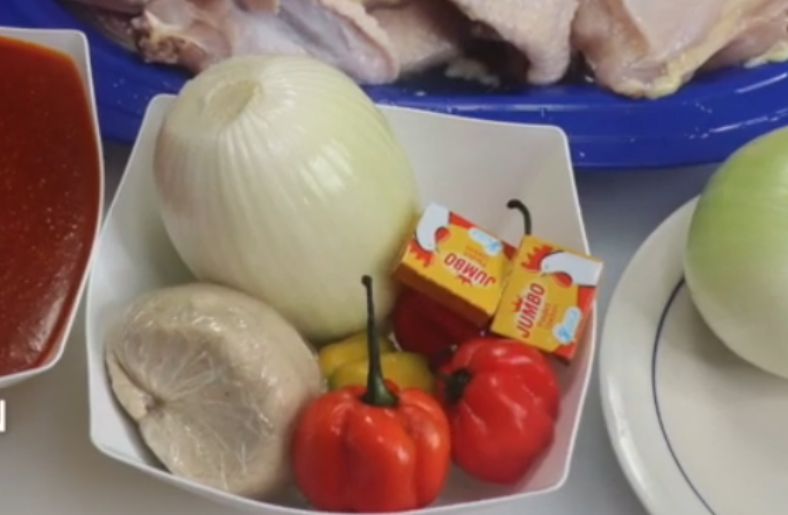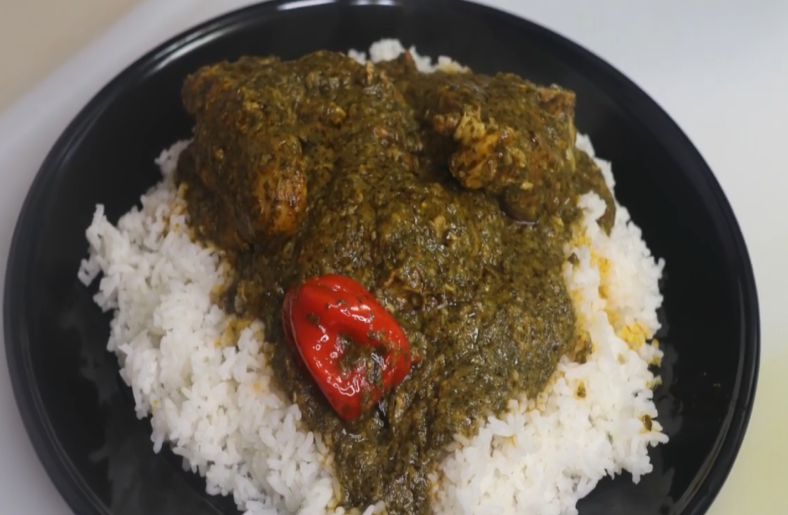Cassava leaves soup is a rich, nutritious meal cherished across African and Asian cultures, known for its earthy flavor, vibrant spices, and wholesome ingredients that nourish both the body and soul.
Cassava leaves soup brings more than flavor to your table: it connects you to traditions that have fed families for generations.
If you grew up in West or Central Africa or parts of Indonesia, you already know how comforting this dish can be.
Unlike cassava leaves stew, which is thicker, the soup is another experience in the cassava leaf delicacies.
Made with crushed or pounded cassava leaves, slow-cooked meats, palm oil, and spices, it’s more than just a meal; it’s a story served in a bowl.
You’ll find variations in nearly every region, but what stays constant is its role in everyday life.
Packed with plant-based protein, iron, and vitamins, cassava leaves soup supports health while using what the land provides.
This post focuses on soup-specific recipes and techniques, giving you a clear view of how cassava leaves are transformed into something hearty, nutritious, and deeply rooted in local food traditions.
Recommended: How to Make Pondu Cassava Leaves
Table of Contents
- What Makes Cassava Leaves Soup Stand Out?
- Regional Variations of Cassava Leaves Soup
- Ingredients for Cassava Leaves Soup
- How to Prepare Cassava Leaves Soup (Step-by-Step Guide)
- Tips and Variations
- Health Benefits of Cassava Leaves Soup
- Frequently Asked Questions
- Conclusion
What Makes Cassava Leaves Soup Stand Out?
Cassava leaves soup gives you more than just a warm meal. It invites you to enjoy tradition, nutrition, and bold flavor all in one pot, rooted in African and Asian kitchens.
Rich Flavor that Builds with Every Ingredient
You don’t need fancy ingredients to get a bold flavor. With cassava leaves as the base, the real magic happens when you simmer them with palm oil, onions, hot peppers, and groundnut paste.
These ingredients work together to build a deep, earthy taste with a touch of nuttiness and heat.
Some versions use dried fish or smoked meat, adding a layer of umami that makes each spoonful taste fuller and more complete.
Texture that Matches Your Mood
Some days call for a thick, creamy stew. Other days, a lighter, brothy soup hits the spot.
Cassava leaves soup gives you that choice. By adjusting the amount of broth, oil, or paste, you control the texture.
The finely pounded leaves give the soup body without being too heavy. It’s a satisfying dish that fits any season or occasion without needing constant tweaks.
Spices that Bring Comfort and Warmth
The spices in cassava leaves soup are simple but powerful. Ginger, garlic, onion, and fresh chili are common additions.
They don’t overpower the soup; they round it out. You taste warmth without burning your mouth, and get an aroma that fills your kitchen before the first bite.
These spices also support digestion, making the dish good for both flavor and function.
Meats that Add Depth and Balance
While the soup can stand on its own, the meat takes it further.
Goat, beef, chicken, or smoked fish aren’t just add-ons; they change the soup’s entire profile.
Each brings a different flavor and fat level that balances the bitterness of cassava leaves.
The result is a more rounded dish that keeps you full longer and adds protein to your meal without much effort.
Regional Twists That Keep It Interesting
Cassava leaves soup isn’t the same everywhere. In Sierra Leone, you’ll taste more groundnut. In the Congo, it might be richer with palm oil.
In Indonesia, coconut milk and local herbs change the base entirely.
Each region adds its touch, showing how the same leaf can take on new flavors depending on where and how you cook it.
These twists give you options for trying new things without leaving the comfort of what you know.
Related Posts
- Science-Backed Cassava Leaves Benefits
- Cassava Leaves Nutritional Facts
- Cassava Leaves Health Benefits
- How to Cook Cassava Leaves
- Delicious Cassava Leaves Recipes
- Cassava Leaves and Fufu: The Perfect Combo
- Is Frozen Cassava Leaves Good?
Regional Variations of Cassava Leaves Soup
Cassava leaves soup changes from place to place, shaped by what people grow, eat, and pass down.
Each version tells a different story through ingredients and traditions that feel close to home.
Sierra Leone: Plasas with Groundnut Richness
In Sierra Leone, cassava leaves soup goes by the name plasas. You simmer cassava leaves with palm oil, groundnut paste, and meats or dried fish.
The groundnut gives it a smooth texture and nutty flavor that fills you up fast. This version is bold and hearty and is usually paired with rice.
The aroma in Sierra Leonean kitchens when this soup is cooking stays with you long after the meal is done.
Democratic Republic of the Congo: Smoky Pondu
In the Congo, pondu is made with cassava leaves, smoked fish or meat, and simple spices.
Some add okra, mushrooms, or bitter eggplant, depending on what’s available.
The smoky taste of the meat and the thickness of the stew make pondu a deep, warming dish.
You eat it with rice, plantains, or fufu, depending on your preference. It’s a meal that brings people together.
Liberia: Spicy, Thick and Hearty
Liberian cassava leaves soup leans on bold flavor and texture. You cook it until it’s thick and rich, using fresh or dried fish, onions, hot peppers, and bouillon.
It’s usually served with rice or fufu, keeping the meal balanced and filling.
What sets it apart is the spice kick, just enough heat to wake up your taste buds without burning your tongue.
Indonesia: Daun Singkong with Coconut Milk
In Indonesia, cassava leaves soup takes a different path. Known as daun singkong, this version uses coconut milk for a creamy base.
You’ll also find galangal, turmeric, lemongrass, and chili. These spices bring brightness and depth.
The soup is lighter than its African counterparts but still full of flavor.
It pairs well with rice and fried tofu or tempeh for a complete meal that satisfies without feeling heavy.
Related: How to Pair Rice and Cassava Leaves Stew
Ingredients for Cassava Leaves Soup
Making cassava leaves soup starts with choosing the right ingredients.
Every piece matters, from the fresh greens to the spices and oils that build the flavor from the ground up.
Cassava Leaves: The Star of the Dish

You want fresh or pounded cassava leaves to build your base.
Young leaves are softer and easier to cook, which gives the soup a smooth texture without too much effort.
They carry a deep, earthy taste that sets the tone for the whole dish.
Whether you chop them by hand or use a mortar, this ingredient does the heavy lifting when it comes to flavor.
Broth Base: Water, Stock, or Coconut Milk

Your choice of broth changes how the soup turns out. Water keeps things light and simple. If you prefer a richer base, use meat or fish stock for more depth.
Coconut milk adds a creamy touch and softens the stronger notes of cassava leaves.
Go with what matches your mood or pantry, it all works as long as you balance it right.
Proteins: Fish, Beef, Goat, or Shrimp

Adding protein turns this soup into a full meal. Smoked fish brings in a deep, salty flavor.
Beef or goat offers a meaty bite that holds up in a thicker broth.
Shrimp adds a lighter, slightly sweet touch.
You can even mix them depending on what you have. Let the protein simmer with the leaves so everything blends.
Seasonings: Onion, Garlic, Ginger, and Peppers

Your spice mix decides how bold the soup tastes. Onion and garlic give you that familiar base, while ginger adds a little heat and sharpness.
Peppers bring the fire; how much is up to you. Whether you like it mild or spicy, don’t skip this step.
Seasonings help pull everything together and keep the soup from falling flat.
Add-Ins: Palm Oil, Groundnut Paste, and Fermented Flavors

For more flavor, try adding palm oil, which gives a rich color and a soft nutty touch.
Groundnut or peanut paste thickens the soup and adds creaminess.
If you want something with a tangy edge, go for fermented seasonings like ogiri or dawadawa.
These extras can make your soup stand out and give it that homemade taste that sticks with you.
How to Prepare Cassava Leaves Soup (Step-by-Step Guide)
Making cassava leaves soup starts with fresh greens and ends with a rich, satisfying bowl. Each step builds flavor and brings the dish closer to home-cooked comfort.
Step One: Wash and Boil the Cassava Leaves
If you’re working with fresh cassava leaves, rinse them well to remove grit or dust. After that, chop the leaves into fine pieces.
Cassava leaves contain compounds that can be harmful if raw, so boil them in clean water for 10 to 20 minutes.
Discard the water to make them safe to eat. This step is not optional; it’s key to turning a wild leaf into a safe and tasty base.
Step Two: Build a Flavor Base with Aromatics
Heat some palm oil or groundnut oil in a large pot. Once hot, add chopped onion, garlic, and ginger.
Stir them around until the onions turn soft and start to brown a bit. At this stage, you can add tomatoes or bell peppers if you have them.
Let them soften and cook down. These ingredients will be the base of your soup and give it a balanced, savory flavor.
Step Three: Add Cassava Leaves and Proteins
Once the base smells right, stir in the boiled cassava leaves. Mix well so the greens soak up the flavor.
Add in your choice of protein, pre-cooked beef, chicken, or fish works well. The meat should already be soft to keep cooking time short.
Add just enough water or stock to cover everything, then bring it to a simmer. Let it cook for 30 to 45 minutes so the flavors blend.
Step Four: Adjust Texture and Flavor
You can stir in a spoonful of peanut butter or palm oil during the simmer for extra body.
If the soup tastes bitter, balance it out with a pinch of sugar or a splash of lemon juice.
Taste as you go and keep adjusting the seasoning. Salt and pepper should be added last, once everything else is in harmony.
This is where your soup comes alive.
Step Five: Serve It Your Way
Once the soup has thickened and the flavors are right, it’s ready. Serve it hot with rice, fufu, or boiled plantains.
The rich sauce pairs well with most starchy sides. Cassava leaves soup is one of those dishes that tastes even better the next day, so don’t worry if you make a big pot. You’ll be glad you did.
Tips and Variations
Cassava leaves soup can match your taste and diet with just a few tweaks.
Whether you’re cooking for yourself or feeding a crowd, these tips will help you make it your own.
Try Plant-Based Options
If you want to skip meat, swap it out with tofu, tempeh, or even mushrooms.
These ingredients give the soup body and flavor without needing animal protein.
Use vegetable broth instead of meat stock for a rich, savory base that keeps it plant-based.
This version holds its own and still pairs well with rice or fufu.
Adjust the Heat to Your Taste
Spices can make or break your cassava leaves soup. If you’re not sure how much heat you want, start small.
Add chopped chili peppers or spicy seasoning a bit at a time. Let the soup simmer, then taste and adjust.
You can also stir in fresh parsley or cilantro near the end for a fresh lift without adding more heat.
Add Bold Spices
Want a deeper flavor? Smoked paprika, chili powder, or dried crayfish can do the trick.
These spices layer the soup with a richer taste that holds up even when served with plain sides. Just be careful not to overdo it.
Add little by little and keep tasting. That way, you get the flavor just right.
Pair with the Right Sides
Cassava leaves soup goes best with starchy sides that soak up the broth. Rice, boiled plantains, yam, or fufu work well.
These add texture to your meal and help balance out the flavors in every bite.
If you’re serving guests, offer a variety and let them choose their favorite combo.
Store and Reheat the Right Way
If you have leftovers, cool the soup first, then store it in a sealed container in the fridge. It keeps well for up to three days.
When you’re ready to eat again, reheat it on the stove with a splash of water or broth. This keeps it from drying out and helps revive the flavor.
Health Benefits of Cassava Leaves Soup
Cassava leaves soup is more than a comforting dish; it’s packed with nutrients your body can use daily.
It’s rich in plant-based protein and amino acids, making it ideal for vegetarians or anyone cutting back on meat.
The soup is a good source of Vitamin A, which supports vision, immunity, and skin health, and it also contains B vitamins that boost energy.
Natural compounds in the leaves may help manage blood sugar and blood pressure.
Spices like garlic and ginger aid digestion, while antioxidants fight cell damage linked to aging and disease.
Combined, these benefits make cassava leaves soup a smart and tasty addition to your regular meals, supporting your health naturally and satisfyingly.
Frequently Asked Questions
Is cassava leaves soup safe to eat?
Yes, cassava leaves are safe once boiled properly. Boiling removes toxins and prepares the leaves for cooking with spices, oils, and proteins.
Can I make cassava leaves soup without meat?
Absolutely. Use tofu, mushrooms, or tempeh instead. Vegetable broth and spices still deliver the full-bodied flavor of the traditional dish.
What does cassava leaves soup taste like?
It has an earthy, slightly bitter taste balanced by palm oil, spices, and proteins. Regional variations may add nutty, smoky, or creamy notes.
Can I freeze leftover cassava leaves soup?
Yes, cassava leaves soup freezes well. Let it cool, store in airtight containers, and freeze. Reheat gently and stir to restore texture.
Conclusion
Cassava leaves soup isn’t just food, it’s heritage in every spoonful.
From smoky Congolese pondu to creamy Indonesian daun singkong, each version celebrates local flavors and memories passed down through generations.
The beauty of this dish lies in its adaptability: it suits both meat lovers and plant-based eaters, offering rich nourishment from natural ingredients.
Whether you’re craving comfort, connecting with your roots, or exploring global cuisine, cassava leaves soup delivers nutrition, flavor, and soul.
With the right balance of spices, proteins, and technique, you can transform humble leaves into a deeply satisfying meal.
So the next time you cook, let this dish remind you of food’s power to tell stories and bring people together.
References

Chimeremeze Emeh is a writer and researcher passionate about Africa’s most transformative root crop—cassava. Through his work at cassavavaluechain.com, he explores the entire cassava industry, from cultivation and processing to its diverse applications in food, health, and industrial use.
He also writes for palmoilpalm.com, where he shares his extensive experience and deep-rooted knowledge of palm oil, covering red palm oil, palm kernel oil, and refined products. His work there reflects his lifelong connection to agriculture and his commitment to promoting sustainable value chains in Africa.
Driven by curiosity and purpose, Chimeremeze aims to shed light on how cassava continues to empower communities, strengthen food systems, and link traditional farming wisdom with modern innovation.

